Tracing the history of sawfish in Lake Sentani
If you have ever heard that sawfish live in the oceans and rivers, that is normal. But have you ever heard that sawfish could also live in a lake? The answer is yes, they can. Precisely in Lake Sentani, Jayapura, Indonesia, it has been proven that sawfish existed in there. Unfortunately, it has been over three decades since sawfish have never been seen in the lake again. Several scientific articles state that the last time sawfish appeared in the lake was in 1974. However, not much information could be obtained from this research because sawfish were not the main study focus then.

Photo © Sawfish Indonesia
So how did the sawfish start living in the lake?
Hari Suroto, Researcher at the Center for Environmental Archeology at the National Research and Innovation Agency (BRIN), explained that Lake Sentani was once part of the ocean. Due to geological activity, this sea turned into a lake. The sawfish trapped in this lake have finally adapted to their new environment.
Evidence of the presence of sawfish in Lake Sentani can be seen from the rostrum from Putali village that we examined. Based on information from the owner, this rostrum was obtained in the 60s when the owner took part in fishing around the lake with his parents.
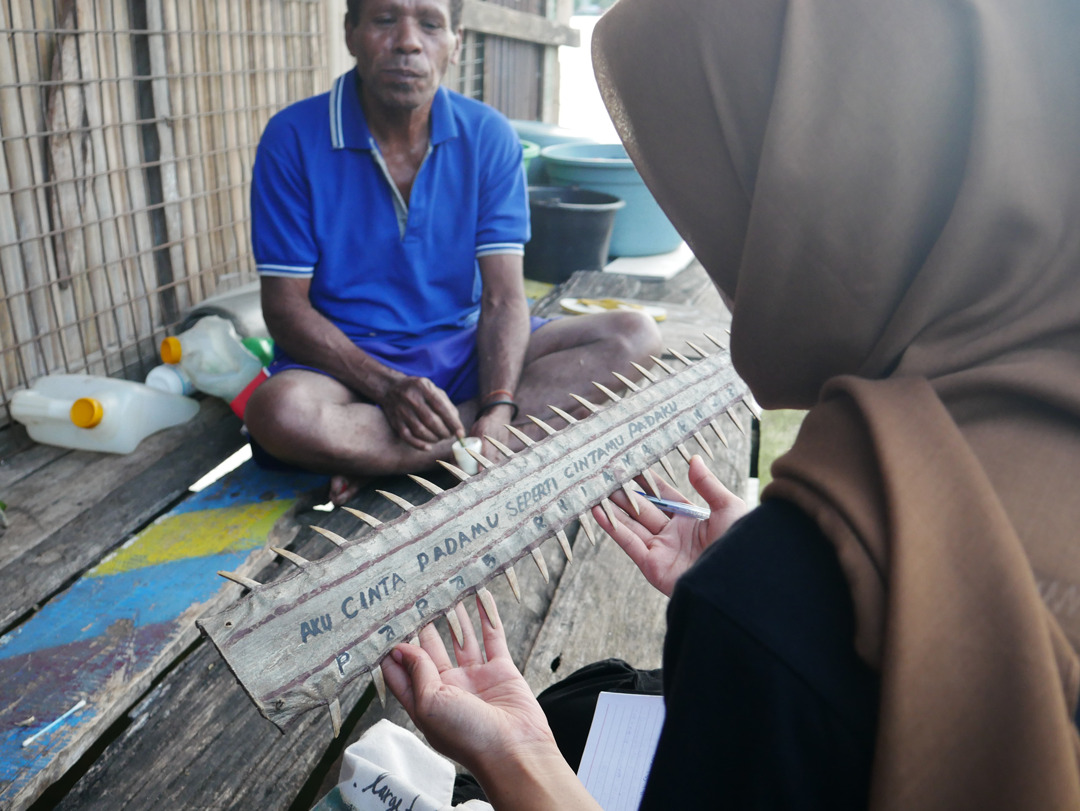
Yance Mehuwe (the blue shirt) is the owner of the rostrum. Photo © Sawfish Indonesia
The existence of sawfish in the past has made this animal a cultural value for the Sentani indigenous people. In ancient times, when people did not know the script, they would paint or carve objects related to them around the lake, including sawfish. During Sawfish Indonesia’s journey to find traces of sawfish in the past, we explored ten villages around Lake Sentani and collected several cultural records related to sawfish in Sentani. We note that there are at least two local sawfish names: Melemai and Meremai. The term “Melemai” is commonly used by the people of eastern Sentani, such as in Asei, Ayapo and Puai villages. Meanwhile, the West Sentani community uses the term “Meremai” consisting of several villages, including Dondai, Yakonde, and Putali.
1. Asei Village
While in the eastern part of Sentani, we visited Asei village. We found a sawfish motif painted on the bark of the coconut tree called “Kombouw.” Generally, the motifs in this bark painting are taken from objects around the lake related to or influencing people’s lives.
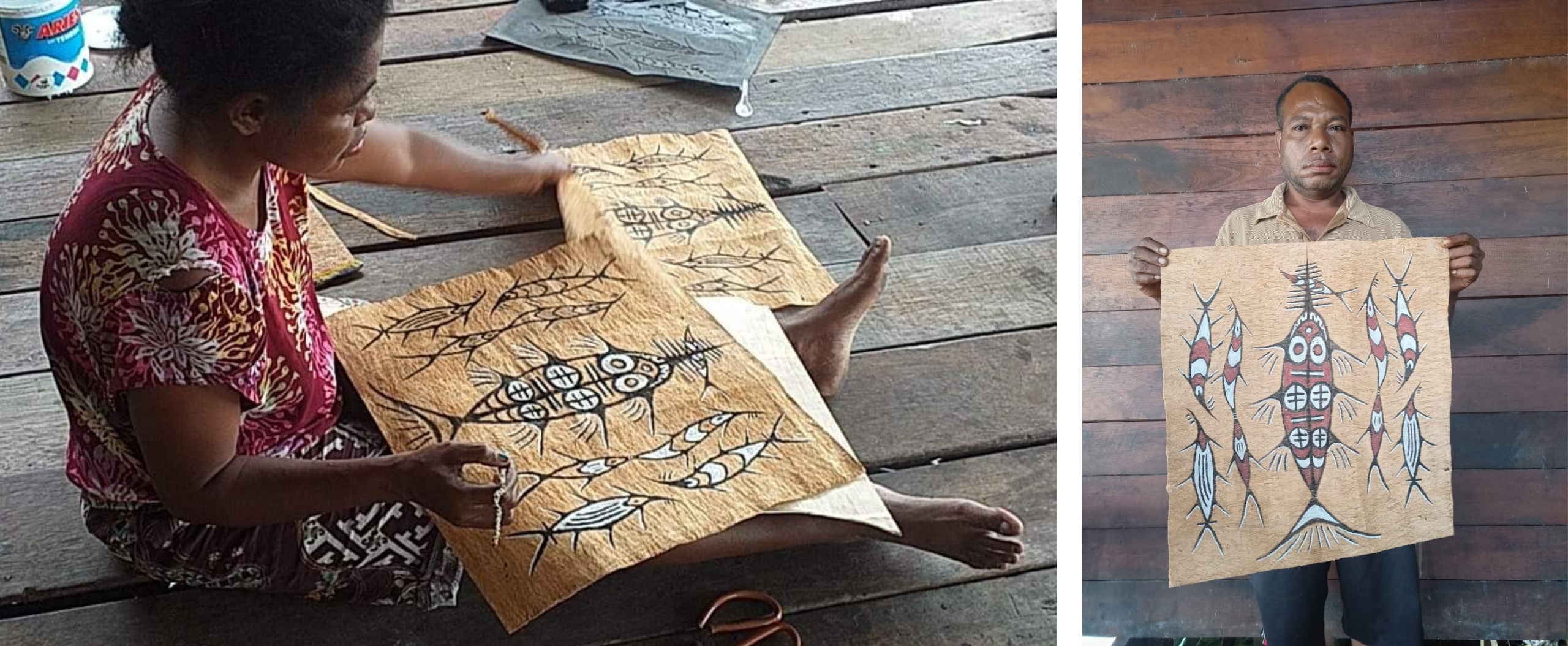
The painters from Asei village. Photo © Sawfish Indonesia
2. Dondai Village
Moving on to the western part of Sentani, we stopped our steps at a traditional village called Dondai.
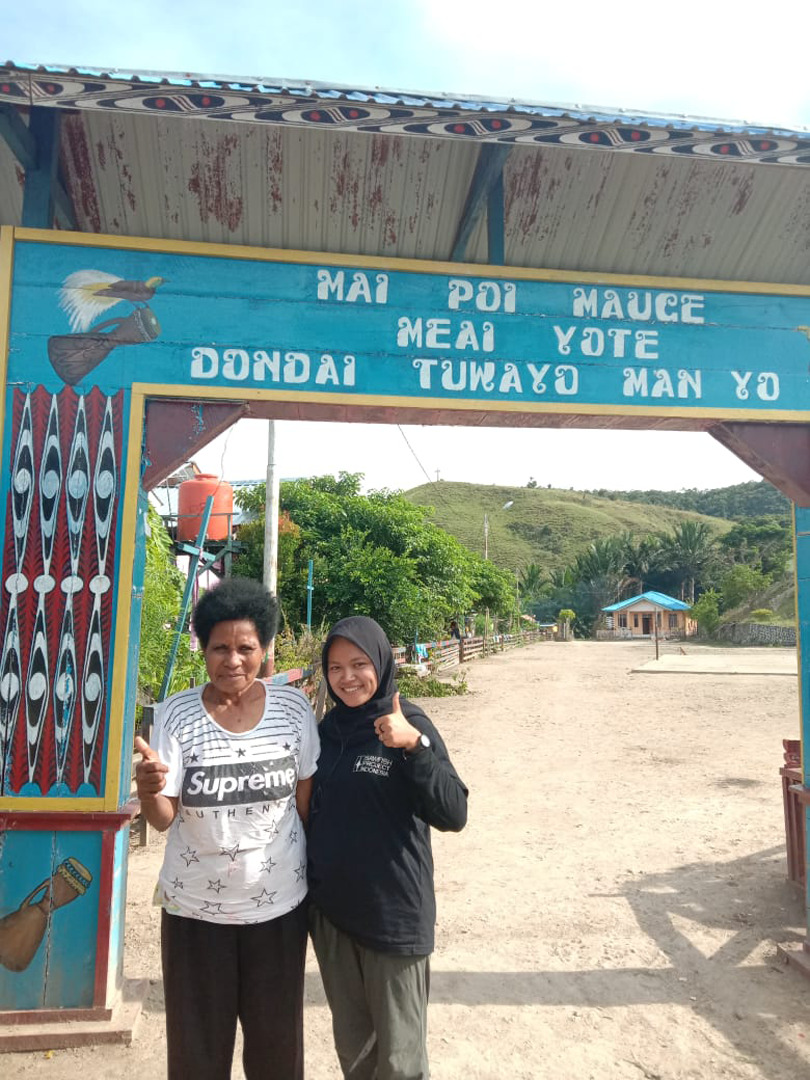
Me with local mama in front of Dondai village gate. Photo © Sawfish Indonesia
We were welcomed at an “Obhe” traditional house and found a carving of sawfish on one of the main pillars. Align with the information we have collected and supported by Mr. Hari’s statement that the sawfish carved on the pillars of this traditional house is a reminder that their ancestors came from the sea (Pacific) and entered the Lake Sentani area. Several clans in Dondai Village are also prohibited from eating sawfish meat.
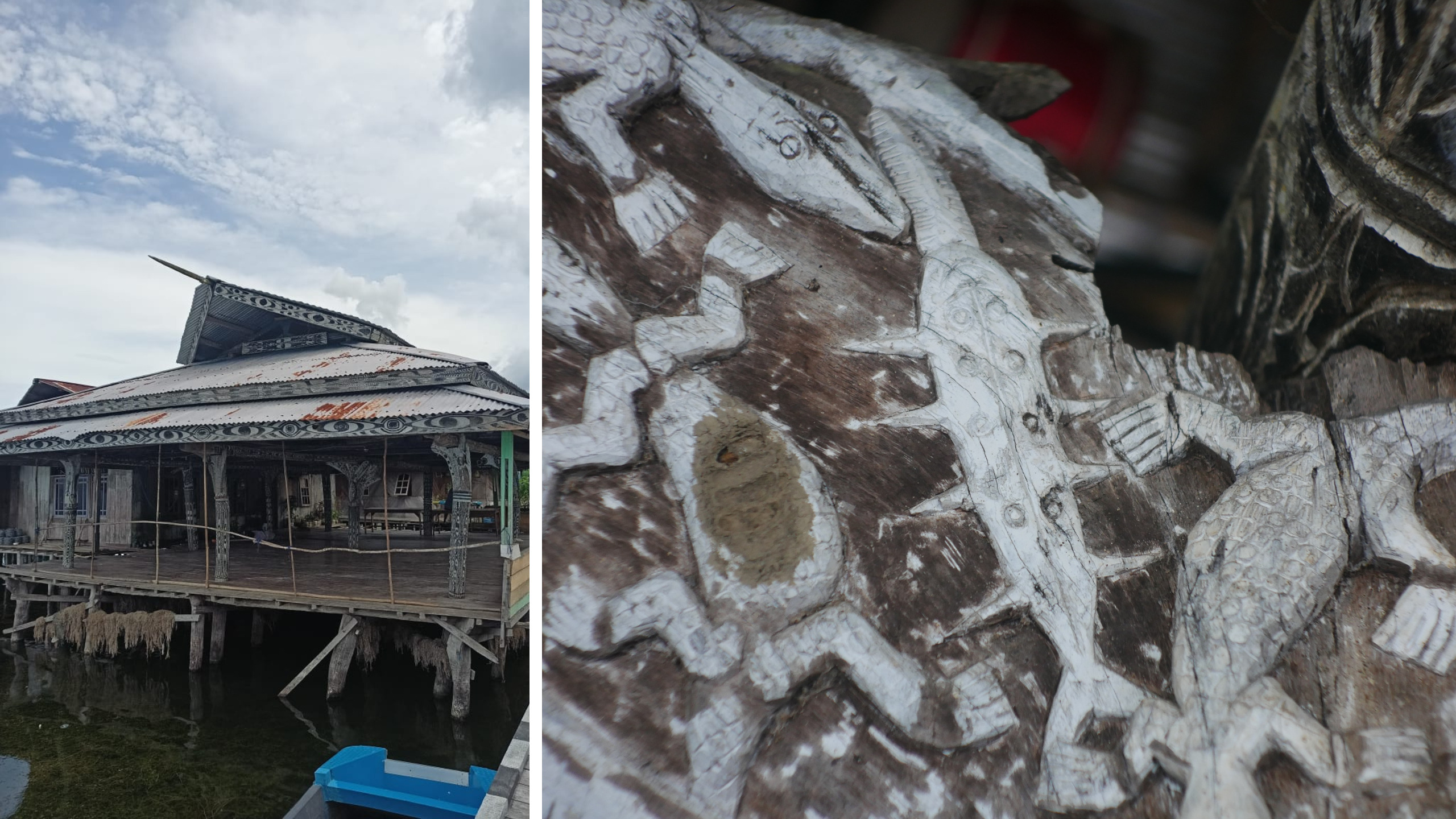
Obhe traditional house (left) and sawfish carving on the main pillar (right). Photo © Sawfish Indonesia
3. Sawfish statue in front of the Sentani district office
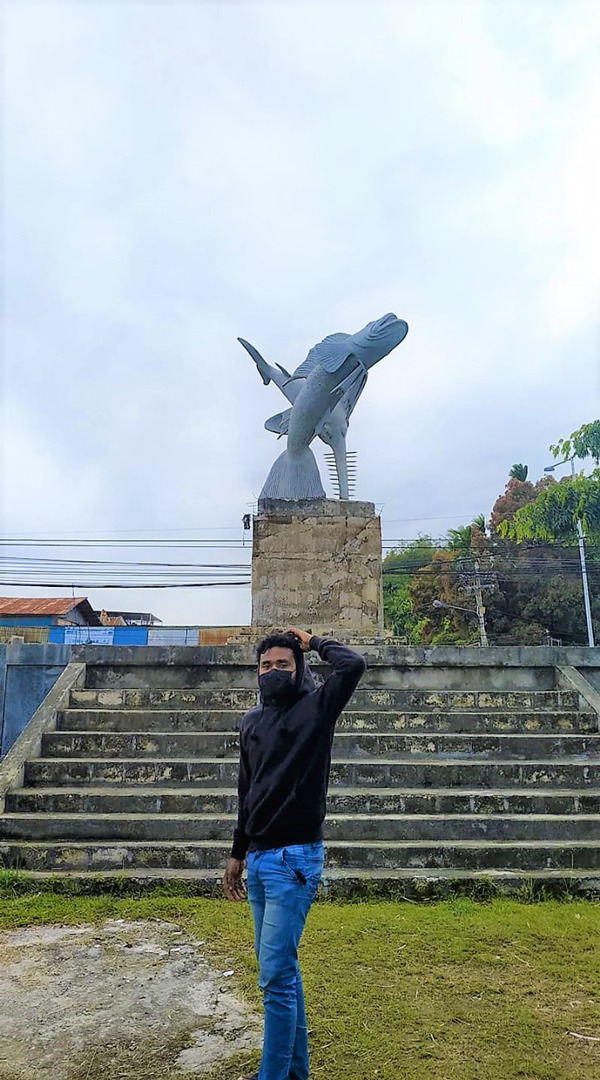
Photo © Sawfish Indonesia
4. School Textbook
Even though it was only published in 2018, this book needs to get high appreciation because it has introduced sawfish to school children. This book, written by Mr. Hari Suroto, contains the history of sawfish in Lake Sentani as well as a complete record of the Tutari Megalithic Site. If you want the entire book, please click this link: http://arkeologipapua.kemdikbud.go.id/
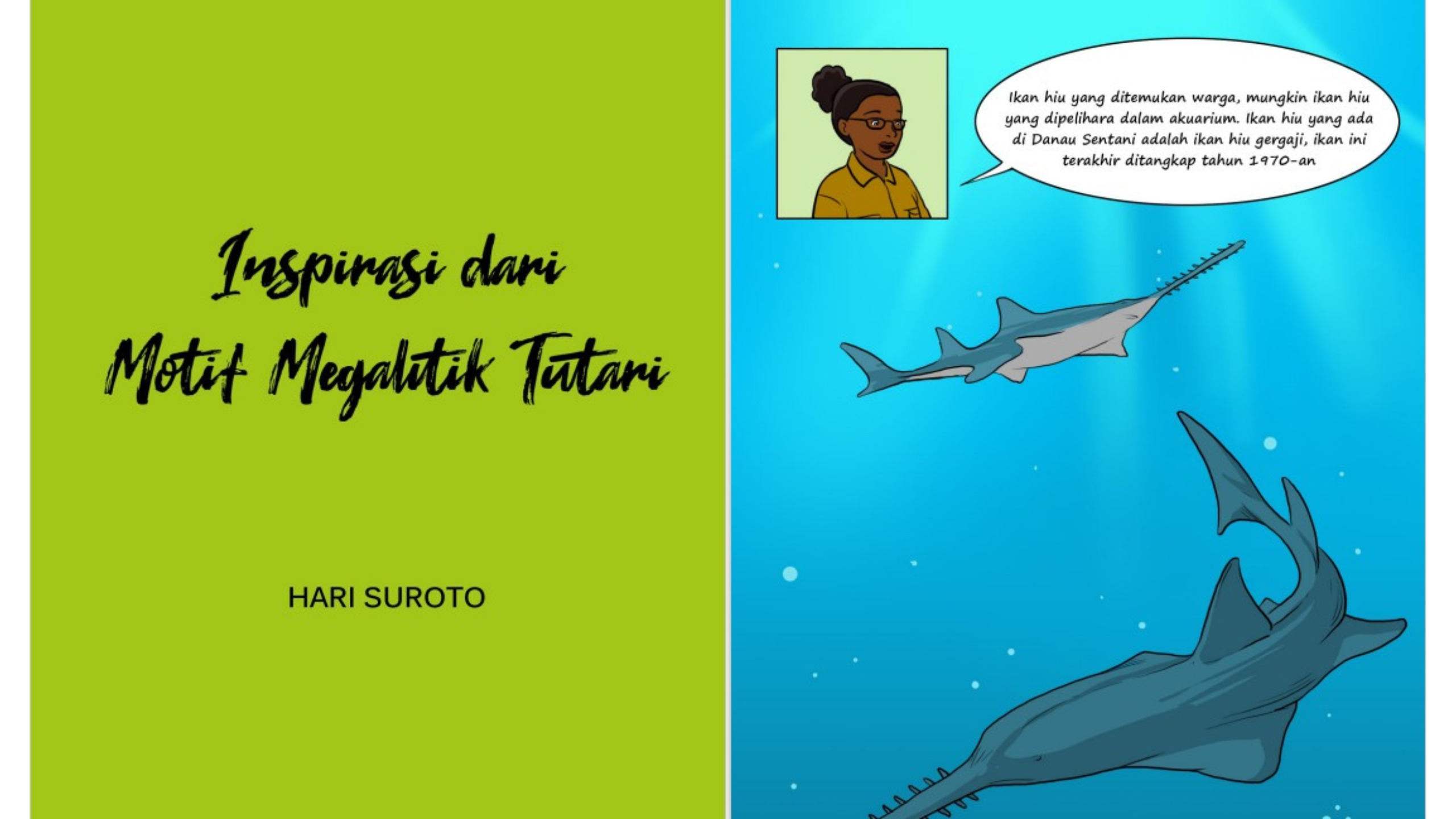
Illustrations © Balai Arkeologi Papua
